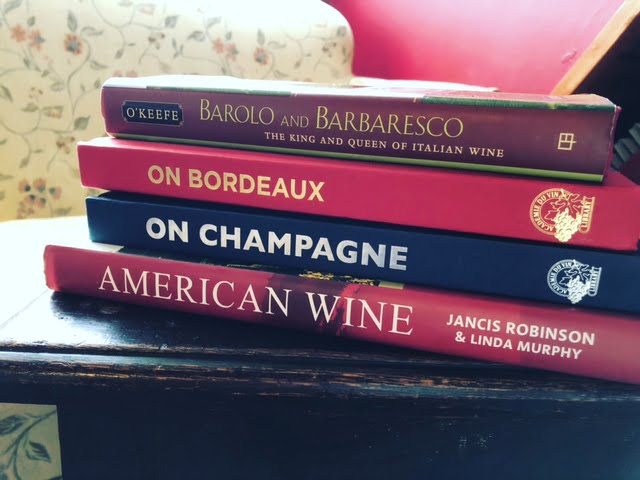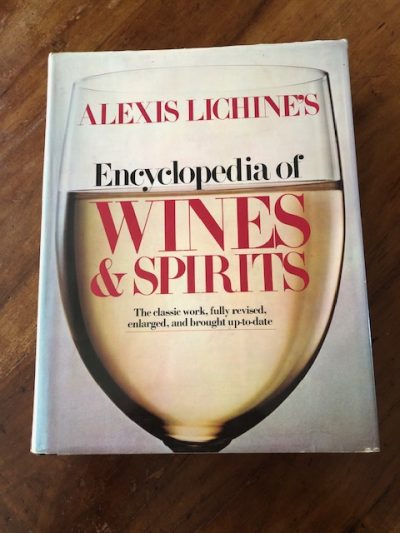
When I began my career as a wine merchant I was kindly gifted a book. It wasn’t new and definitely didn’t come with a gift receipt. It was a well-used, slightly yellowing copy of Alexis Lichine’s, Encyclopedia of Wines and Spirits: the reference book said giver had been using since he first bought it back in the 1970’s at the start of his career in the wine industry. Fifty years later this book is still a valuable tool.
The book also sparked a love of buying wine literature both old and new. Old books offer an insight into what people were talking about 20 or 30 years ago, how winemaking techniques have changed, how regions have evolved, what was fashionable or de rigueur that may be worth revisiting. New books (well-researched ones at least) offer the benefit of hindsight along with a good insight into where the wine industry might be headed.
There are thousands of books written on the subject of wine many of which are sold for peanuts in second hand bookshops and websites such as Abe Books. Gathering a large collection hasn’t been too difficult but working out which are worth reading has taken a little more effort.
Whilst we like writing newsletters about wines we’re currently selling and/or drinking, we also like sharing our knowledge and discoveries. This is the first in a series of newsletters that will be reviewing the books we have found most interesting and valuable in our large collection. Many are still in print, others are available to buy second hand, and we will try our best to point you in the direction of a stockist.
We might as well start with the aforementioned Encyclopedia of Wines and Spirits by Alexis Lichine (published by an American company hence the spelling of Encyclopaedia without the ‘a’).

Lichine was a fairly prominent figure in the wine industry throughout the post-war period. Born in Moscow in 1913 his family fled Russia during the Russian revolution and settled in the US after a brief stint in France. He worked for a number of wine importers and merchants both before and after the second world war eventually striking out on his own in Bordeaux with a wine export business and the acquisition of Chateau Priuere-Lichine.
Lichine went on to write several books on the subject of wine with a particular focus on France, and participated as a judge in several prominent wine tastings.
The knowledge he gained throughout his time in the industry is well documented in The Encyclopedia of Wines and Spirits. First published in 1967, the book is akin to a dictionary of wine terminology. Organised in alphabetical order it provides a description of each word or name; some are short and to the point: “Nasco di Cagliari: A desert wine from Sardinia”, others offer several pages of information as well as charts and maps.
The knowledge he gained throughout his time in the industry is well documented in The Encyclopedia of Wines and Spirits. First published in 1967, the book is akin to a dictionary of wine terminology. Organised in alphabetical order it provides a description of each word or name; some are short and to the point: “Nasco di Cagliari: A desert wine from Sardinia”, others offer several pages of information as well as charts and maps.
The most valuable aspect of this book is the breadth of terms it includes, in particular, those that may no longer be in common use but crop up occasionally. I realise we now have the wonders of google but this book is surprisingly faster at getting to the point.
It is also quite fun to just open the book at random and see what you find.
“Oeil de Pedrix: French for ‘partridge eye’. A term derived from the pinkish tint in a partridge’s eye and applied to a pinkish tinge in white wines. It is found in some of the white Burgundies and in Champagnes. This term has been dying out since Vin Rosé began to be popular’.
I found the discovery of this description particularly enjoyable given his son Sacha Lichine went on to spark the Rosé phenomenon with Whispering Angel.
The book covers producer names, grape varieties, countries, regions, technical wine making terms, appellation rules, as well as several introductory chapters on wines, spirits and their history. Given it was written in the mid 1960’s there is a slight expectation the book will be outdated but the majority of the information is still perfectly relevant and those terms that aren’t well used are still worth knowing.
The lack of photos is also rather refreshing. No glossy, romantic views of vineyards, just solid information written in an informative yet relaxed style. You can certainly get a feel for what Lichine thinks about certain regions, producers and industry regulations.
The book is a culmination of a life spent working in wine and, whilst no longer in print, there are several copies available second hand on Abe Books and Amazon, the cheapest being £3.50 including postage. An inexpensive addition or start to a collection.
